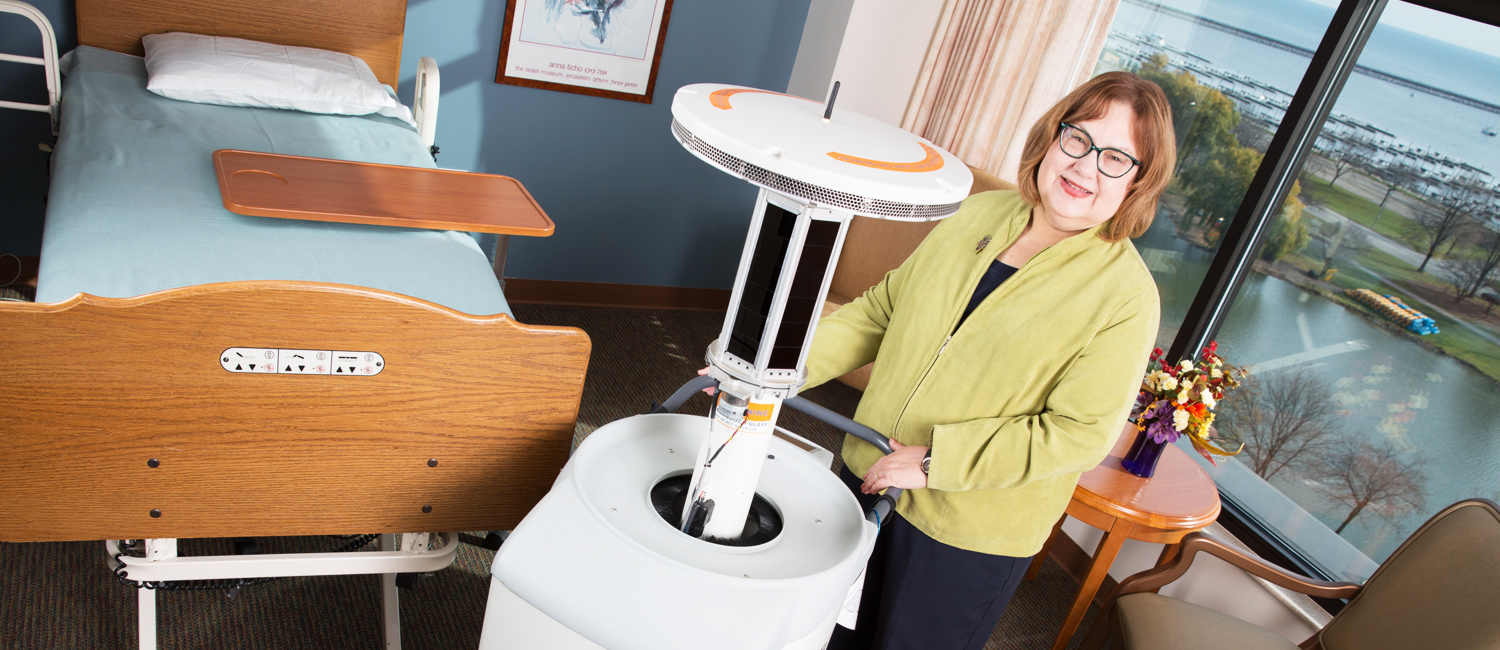
Robot research at the Jewish Home
The quiet robot’s name is Nikki, which means, fittingly enough, “to clean” in Hebrew. It’s a new addition to Milwaukee’s Jewish Home and Care Center, and though it’s only 3 1/2 feet tall, its disinfecting skills have played a big role in reducing infection rates among residents.
When switched on, Nikki’s head rises out of its body, revealing a “neck” made of lamps that emit pulsed-xenon ultraviolet light. The light kills any pathogens in a 12-foot radius and is so strong that humans must step out of the room while Nikki works. The 15-minute sanitizing process is used along with traditional cleaning.
Nursing professor Christine Kovach, who holds a three-year research chair at the Jewish Home, has studied the robot’s germ-busting ability. The Jewish Home is one of only 12 nursing homes in North America with on-site research offices and the only one in Wisconsin.
Nikki, created by Texas-based company Xenex, is usually used in hospitals, often to disinfect operating rooms. “We’re the first nursing home in the country to test it,” Kovach says.
She and her team found surprisingly few bacteria after traditional cleanings, but even fewer after robot cleanings. Researchers also analyzed infection rates in the facility before and after staff began using Nikki. Hospital-acquired infections rose among residents admitted to hospitals in that period, but the number of residents who contracted such infections at the Jewish Home dropped significantly.
Elaine Dyer, the Jewish Home’s director, says Nikki benefits residents by killing pathogens on surfaces that can’t get frequent cleanings, such as wallpaper, curtains and books.
She added that last winter, Nikki minimized outbreaks of norovirus among the residents in assisted living and independent care.
Kovach’s next Jewish Home endeavor is studying the diagnosis and treatment of restless leg syndrome in people with dementia. She’s co-principal investigator on the project, which is funded with $3.8 million from the National Institutes of Health.
“So much of long-term care is based on habit. It’s not based on sound science, so there really is a critical need for research,” Kovach says. “We can use a high level of science and sophisticated methods, and ask questions that are particularly relevant.”